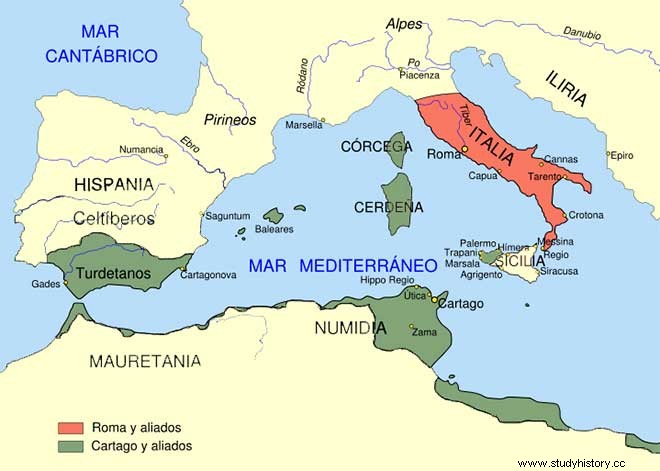The Phoenicians had shown no initiatives of territorial conquest while they were dedicated to the establishment of commercial colonies on the coasts of Spain; but their relatives and successors, the Carthaginians, who failed in Sicily against the Greeks and then against Rome, tried to compensate for their expulsion from that island with the conquest of large territories in the Iberian Peninsula, beginning the Carthaginian colonization. An exception in the Phoenician behavior, which was continued by the Carthaginians, is the permanent settlement of the people called Libiophoenician on the coast of Malaga, Punic immigrants from North Africa of whose presence there are testimonies from the 6th century BC. The Carthaginian and Libyan-Phoenician establishments extended throughout the southern coast of Iberia until the Roman conquest and acted as guardians of the Strait to prevent the passage and, of course, the settlement of Greek explorers. Carthage also established a series of colonies on the southern Atlantic coast of Spain and a set of other colonies in the extreme north of Africa and on the African coast of the Atlantic, where they made notable progress in a southerly direction.
Together with the mining operations of inland Andalusia, Huelva and the mountains near Cartagena, the Carthaginians extended their production and trade of salted fish whose main product was the well-known preserve called garon , famous throughout the ancient world and especially in Athens. Gádir had a monopoly on the fishing, processing and export of preserves . The Cadiz fishermen and their audacious forays across the Atlantic are responsible for the discovery of the Canary Islands, the island of Madeira and the Azores. The Phoenicians and Carthaginians obtained the precious purple from a mollusk and in the fields near Cartagena they cultivated esparto grass, which later served as the basis for the export of cordage.
The advanced irrigation agriculture that the Romans admired in Cartazo introduced in the south of Spain by the Carthaginians who taught it to the Tartessians. However, the basic export of the Phoenicians and Carthaginians were metals, starting with copper, tin, lead, gold and silver. By oriental influence through Carthage, the Tudetans offer abundant samples of the cult of the bull. The Punic culture influenced, together with the Greek (of which the Phoenician and Carthaginian merchants were also carriers) in the configuration of Iberian art and culture.

